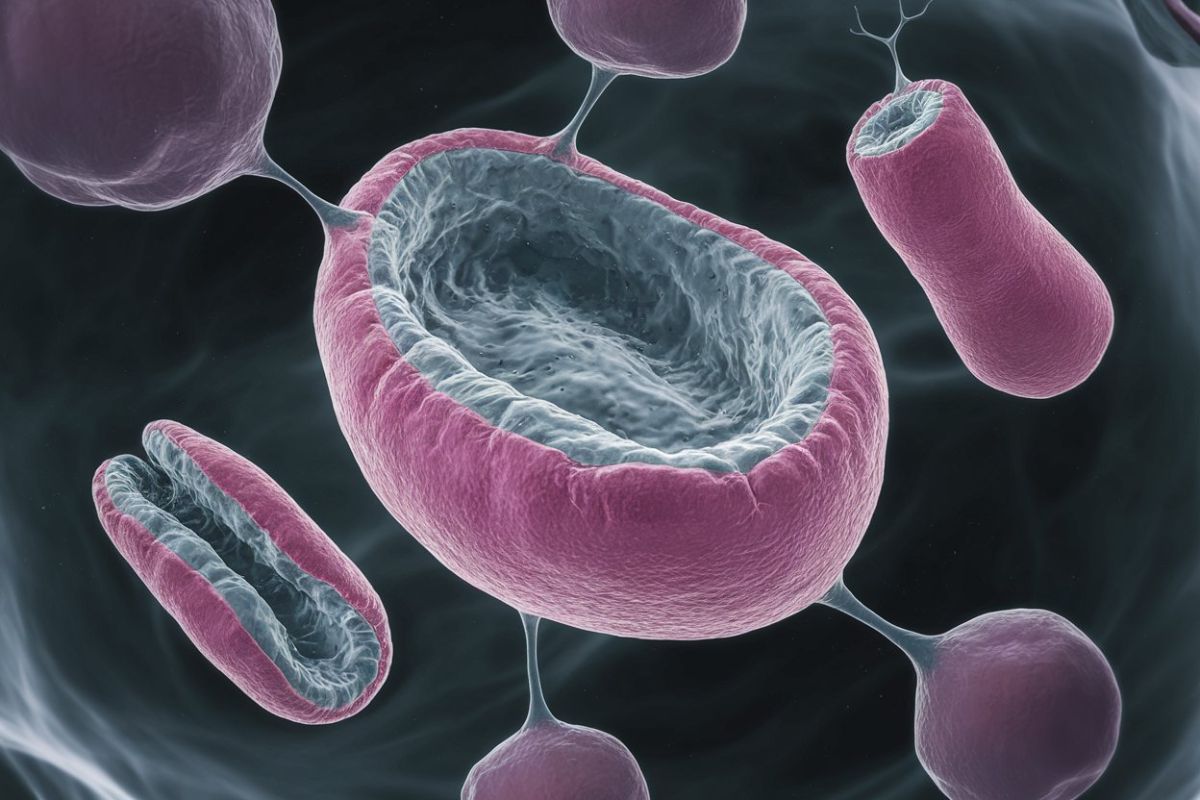
Carnitine-Acylcarnitine Translocase (CACT) Deficiency is a rare, life-threatening genetic disorder that disrupts the body's ability to break down certain fats for energy. This condition, caused by mutations in the SLC25A20 gene, typically presents severe symptoms within the first 48 hours of life, including hypoketotic hypoglycemia, hyperammonemia, and cardiomyopathy. While the exact prevalence remains unknown, at least 30 cases have been reported globally. Early detection through newborn screening and genetic testing is crucial for managing this disorder. Treatment involves strict dietary restrictions, medium-chain triglyceride (MCT) supplementation, and carnitine supplementation to prevent metabolic crises and improve outcomes.
What is Carnitine-Acylcarnitine Translocase Deficiency?
Carnitine-Acylcarnitine Translocase (CACT) Deficiency is a rare genetic disorder that disrupts the body's ability to break down certain fats for energy. This condition falls under the category of fatty acid oxidation disorders.
-
Definition and Cause: CACT deficiency is caused by mutations in the SLC25A20 gene, which is responsible for making the carnitine-acylcarnitine translocase protein. This protein is crucial for transporting long-chain fatty acids into mitochondria for energy production.
-
Prevalence: The exact number of people affected by CACT deficiency is unknown, but at least 30 cases have been reported worldwide.
When Does CACT Deficiency Typically Present?
Understanding the age of onset can help in early diagnosis and treatment, which is crucial for managing this condition.
-
Age of Onset: The condition usually presents in the neonatal period, with severe symptoms appearing within the first 48 hours of life. However, some patients may not develop symptoms until early childhood.
-
Neonatal Form: Infants with CACT deficiency often present with sudden infant death syndrome (SIDS) or die shortly after birth due to severe metabolic disturbances.
-
Milder Phenotype: A rare milder form can manifest in infancy or early childhood, characterized by episodes of hypoketotic hypoglycemia and hyperammonemia triggered by fasting or intercurrent illnesses.
What Are the Symptoms?
Recognizing the symptoms can lead to quicker diagnosis and treatment, potentially saving lives.
- Symptoms: Common symptoms include severe hypoketotic hypoglycemia (low blood sugar without ketones), hyperammonemia (excess ammonia in the blood), cardiomyopathy (enlarged heart muscle), arrhythmias (irregular heartbeat), hepatic dysfunction (liver problems), skeletal muscle weakness, and encephalopathy (brain damage).
Genetic Basis and Mitochondrial Role
The genetic and cellular mechanisms behind CACT deficiency are complex but crucial for understanding the disorder.
-
Genetic Basis: The SLC25A20 gene is located on chromosome 3p21.31 and encodes the carnitine-acylcarnitine translocase protein. Mutations in this gene lead to a deficiency of the transporter, preventing the transport of long-chain fatty acids into mitochondria.
-
Mitochondrial Role: The carnitine-acylcarnitine translocase protein is located in the inner mitochondrial membrane and operates a carnitine/acylcarnitine exchange, essential for fatty acid oxidation.
How is CACT Deficiency Diagnosed?
Early and accurate diagnosis is key to managing CACT deficiency effectively.
-
Clinical Presentation: Affected individuals typically have low blood glucose and a low level of ketones, which are produced during the breakdown of fats and used for energy. This combination of symptoms is known as hypoketotic hypoglycemia.
-
Blood Tests: Blood acylcarnitine analysis shows a very high acyl fraction with marked increases in C16, C18, and C18:1 species. Free carnitine levels are very low in individuals with CACT deficiency.
-
Diagnostic Methods: Specific enzyme analysis in cultured fibroblasts or lymphocytes can confirm the diagnosis. Additionally, demonstrating two pathogenic mutations in the SLC25A20 gene is diagnostic.
-
Newborn Screening: Newborn screening for CACT deficiency is available in several countries, including Austria, Czech Republic, Germany, Hungary, Iceland, Portugal, and Spain.
-
Prenatal Diagnosis: Prenatal diagnosis is possible by mutation analysis of chorionic villus tissue when two pathogenic mutations have been established in a family. Specific enzyme analysis is also available for cultured chorionic villus cells.
How is CACT Deficiency Inherited?
Understanding the inheritance pattern can help families assess their risk.
-
Autosomal Recessive Inheritance: CACT deficiency is an autosomal recessive condition, meaning that a person must inherit two defective copies of the SLC25A20 gene (one from each parent) to develop the condition.
-
Genetic Counseling: Genetic counseling is available to families with a history of CACT deficiency to help them understand the risks and implications of the condition.
What Are the Treatment Options?
Effective management of CACT deficiency involves a combination of dietary restrictions, supplements, and emergency interventions.
-
Treatment: The primary treatment involves strict avoidance of fasting and the institution of a low long-chain fat diet. Medium chain triglyceride (MCT) supplementation is recommended, but the MCT formula should be low in C10 and C12 fatty acids to avoid decompensation.
-
Carnitine Supplementation: Carnitine supplementation is also recommended to help the body break down fats for energy and remove harmful substances from the body.
-
Intravenous Glucose: During acute episodes, intravenous glucose is administered to inhibit lipolysis and prevent further metabolic disturbances.
-
Dietary Restrictions: A restricted diet is necessary to avoid certain foods that the body cannot break down. A nutritionist or dietician can help plan a healthy diet for affected individuals.
-
Supplements and Medication: Children with CACT often take MCT oil and L-carnitine supplements. MCT oil contains fats that individuals with CACT can break down for energy, while L-carnitine helps remove harmful substances from the body.
What is the Prognosis?
The prognosis for CACT deficiency varies widely depending on the severity of the condition and the timeliness of treatment.
-
Early Detection and Treatment: Early detection and treatment can help prevent some of the severe outcomes of CACT deficiency. Newborn screening is crucial for identifying affected infants before they develop severe symptoms.
-
Severe Prognosis: The prognosis for severe CACT deficiency is generally poor, with most patients dying before the age of 3 months. However, some infants treated early in the neonatal period have had a favorable outcome in the medium term.
-
Milder Prognosis: Patients with a milder phenotype generally have a good prognosis if they adhere to the treatment regimen. They are at risk for liver failure, nervous system damage, coma, and sudden death, but these outcomes can be managed with proper care.
How Does CACT Deficiency Compare to Similar Conditions?
Understanding how CACT deficiency compares to other similar conditions can help in differential diagnosis.
-
Clinical Indistinguishability: The neonatal and severe infantile forms of carnitine palmitoyl transferase II (CPT II) deficiency are clinically indistinguishable from CACT deficiency. Both conditions have an identical acylcarnitine profile, although congenital abnormalities are not reported in CACT and only sometimes in CPT II.
-
Non-Specific Dicarboxylic Aciduria: Patients with CACT deficiency often present with non-specific dicarboxylic aciduria, which is a metabolic disturbance characterized by the presence of dicarboxylic acids in the urine.
How is CACT Deficiency Confirmed?
Confirming the diagnosis involves specific tests and genetic analysis.
-
Enzyme Analysis: Specific enzyme analysis in cultured fibroblasts or lymphocytes is necessary to confirm the diagnosis of CACT deficiency. This involves measuring the activity of the carnitine-acylcarnitine translocase enzyme.
-
Pathogenic Mutations: Demonstrating two pathogenic mutations in the SLC25A20 gene is diagnostic for CACT deficiency. This can be done through genetic testing of blood or tissue samples.
What Research is Being Done?
Ongoing research aims to improve our understanding and treatment of CACT deficiency.
-
Clinical Genetics Review: CACT deficiency is reviewed in clinical genetics literature as part of the broader category of fatty acid oxidation disorders. It highlights the importance of early detection and treatment in managing the condition.
-
Emergency Guidelines: Emergency guidelines for CACT deficiency emphasize the need for immediate medical intervention during acute episodes. This includes intravenous glucose administration and supportive care to manage metabolic disturbances.
-
Research Activities: Research activities on CACT deficiency focus on understanding the molecular mechanisms of the condition, developing new diagnostic tools, and improving treatment strategies. This includes comprehensive molecular analysis to expand our knowledge of the condition.
Understanding CACT Deficiency
Carnitine-Acylcarnitine Translocase (CACT) deficiency is a rare, life-threatening genetic disorder. It affects the body's ability to break down certain fats for energy. Caused by mutations in the SLC25A20 gene, this condition usually presents severe symptoms in newborns. Symptoms include hypoketotic hypoglycemia, hyperammonemia, cardiomyopathy, and skeletal muscle weakness. Early detection through newborn screening and genetic testing is crucial. Treatment involves avoiding fasting, a low long-chain fat diet, MCT supplementation, and carnitine supplements. While the prognosis for severe cases is poor, early intervention can improve outcomes. Genetic counseling helps families understand the risks and implications. Ongoing research aims to develop better diagnostic tools and treatments. Understanding CACT deficiency and its management can make a significant difference in the lives of affected individuals and their families.
Was this page helpful?
Our commitment to delivering trustworthy and engaging content is at the heart of what we do. Each fact on our site is contributed by real users like you, bringing a wealth of diverse insights and information. To ensure the highest standards of accuracy and reliability, our dedicated editors meticulously review each submission. This process guarantees that the facts we share are not only fascinating but also credible. Trust in our commitment to quality and authenticity as you explore and learn with us.


